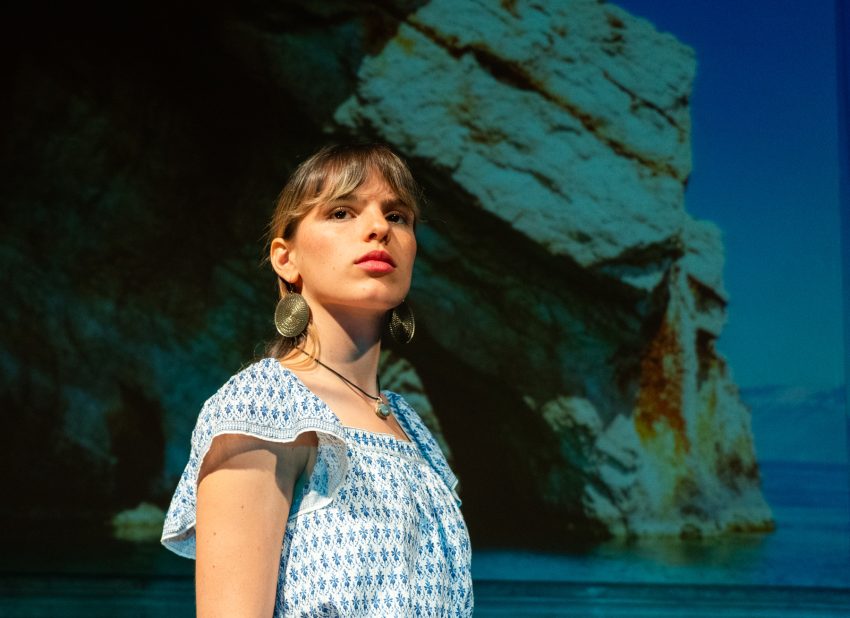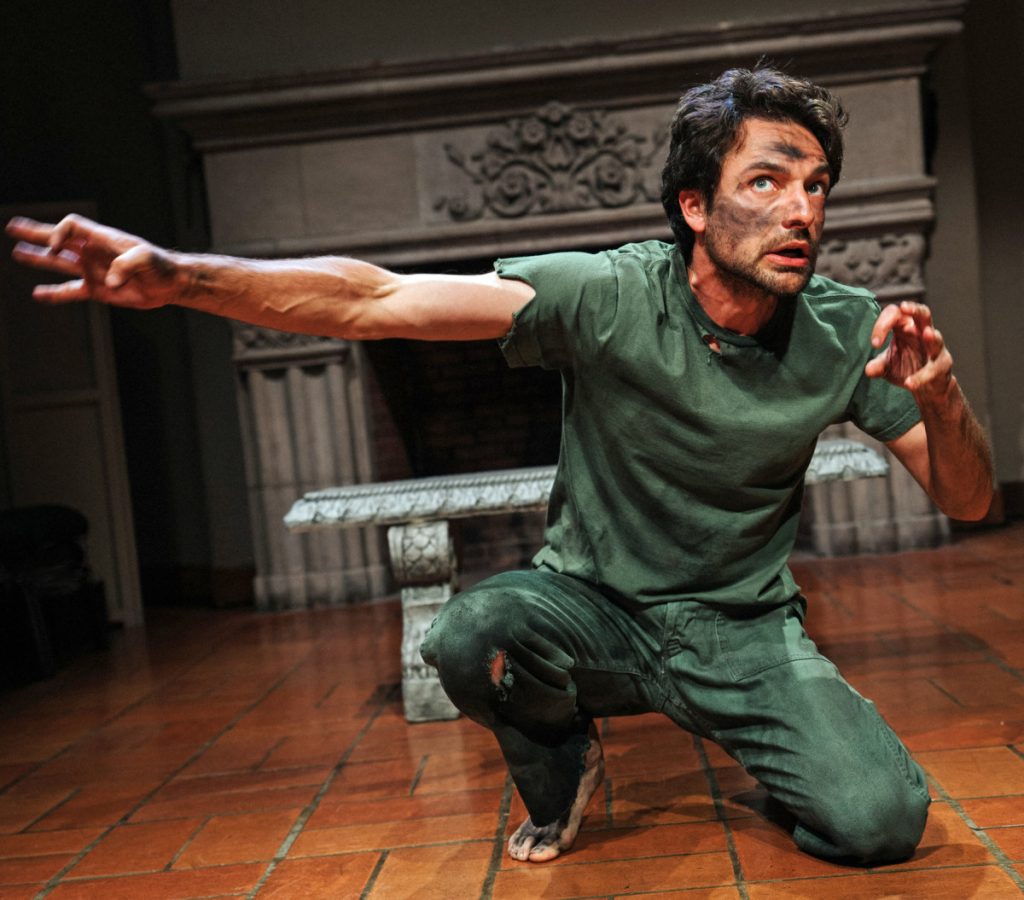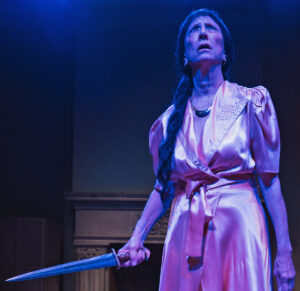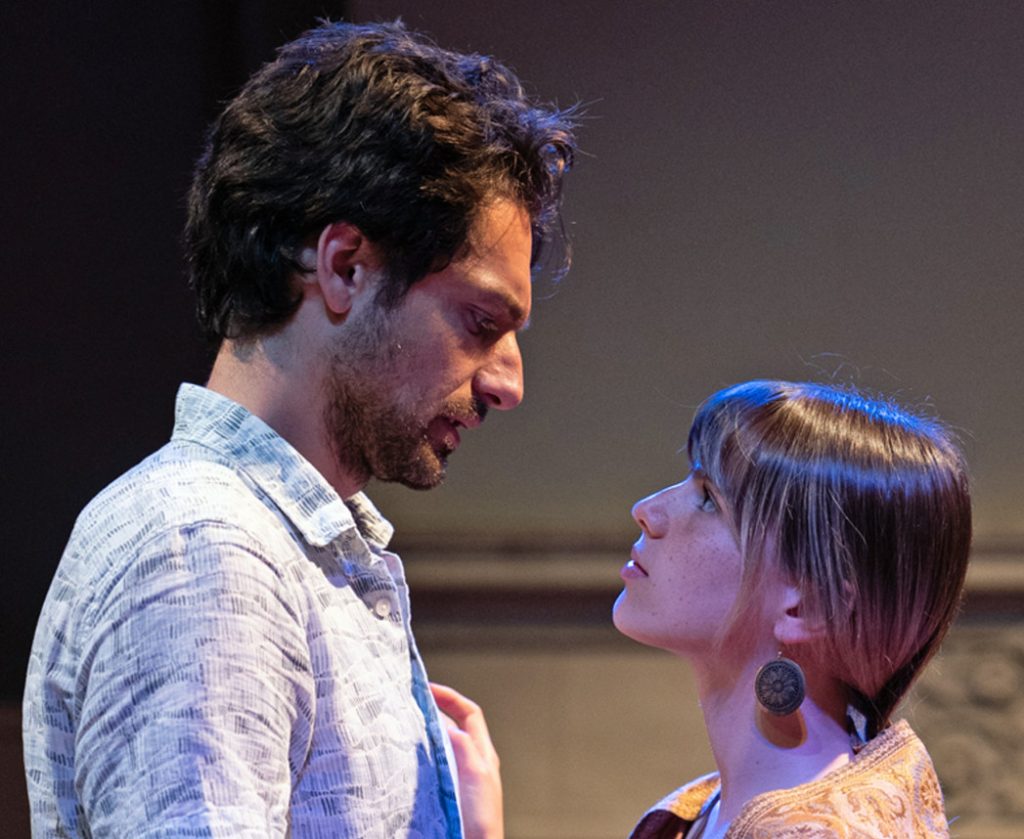
“The Last Goat” Explores Trio of Treachery—at Central Works
Gary Graves Ponders Collapse of Empires, from Greece to US
by Emily S. Mendel
Three thousand years ago, a grandmother and her granddaughter live alone on the Greek island of Kasos. They eke out a farming existence with hard work and resolute anger. Down to their last goat, symbolizing the end of their livelihood, a young man inexplicably appears.
Gary Graves’ fascinating premise for his 80-minute play cleverly mixes ancient Greek tales from The Odyssey with the mysterious “Late Bronze Age Collapse.” He considers modern questions of trust, male/female power, and the ending of modern civilization.
Jan Zvaifler skillfully plays the grandmother Melina, who is too discouraged and dejected after her demanding work to show love or gentleness towards her granddaughter, 20-year-old Kori (nice work by Liris Robles). The two women run the farm after all the men have gone to war, died of illness, or disappear.
Kori, a stubborn girl, wants desperately to leave the deserted island, see the world, and have a life of her own. But how? And where to go?

Enter dirty and disheveled young Nikolis (excellent Andre Amarotico) with a tale of being shipwrecked after a sea monster attack. He claims to be from Mikonos, the eldest son of a wealthy, landowning family. Although Greek custom requires them to offer hospitality to strangers, Melina fears he’s interested in young, attractive Kori, taking over their farm, or both.
The older woman’s history makes her mistrust men. Kori remains innocent, although she knows what she wants. Kori sees Nikolis as a ticket to a new life off the island. But who is Nikolis really? And what does he want?
The trio is in a tense, unsolvable struggle for control. Unlike in the old Greek sagas, the women in “The Last Goat” hold their own against the one man.

Before the story begins, we are treated to an introductory talk with Andre Amarotico acting as a stuffy professor who expounds on the Late Bronze Age Collapse of flourishing 12th century B.C. cultures in the Mediterranean. The breakdown could have been caused by climate change, earthquakes, invasion by “Sea People,” political and economic disruptions, warfare, or migration.
What does this have to do with the treacherous trio? Playwright Graves is comparing the Late Bronze Age Collapse to our current civilization. Graves is commenting on how quickly events change, down to the level of desperate individuals abandoned by elite rulers or cataclysmic collapses.

I had occasional trouble remembering that the cast was supposed to be in ancient Greece. Without much in the way of scenery (as is always the case at Central Works), and the modern-day costumes and speech, the references to the Gods brought me back to the three-thousand-year-old setting.
The fine acting, writing, direction, and taut plot keep the action moving. I recommend “The Last Goat” for its perceptive and universal look at people’s behavior under stress, while adjusting to a quickly changing world.
“The Last Goat” written and directed by Gary Graves, stage managed by Liora Jacob and Tiana Hanson, sound and projection by Gregory Scharpen, lighting by Gary Graves, costumes by Tammy Berlin, at Central Works, Berkeley, California. Info: centralworks.org – to August 3, 2025.
Cast: Andre Amarotico, Liris Robles, and Jan Zvaifler.
Banner photo: Liris Robles (Kori). Photos: Robbie Sweeny
©Emily S. Mendel 2025 All Rights Reserved